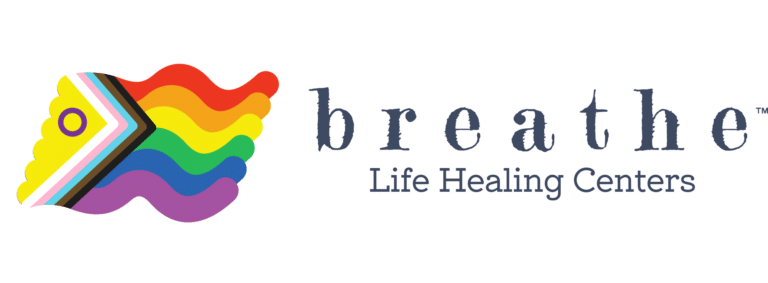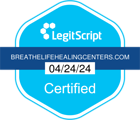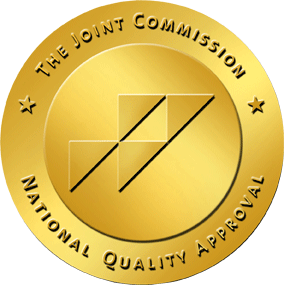Exploring the Unique Needs of All Individuals in Rehabilitation
In the world of addiction recovery, acknowledging and addressing the unique needs of all individuals is crucial. This community often faces specific challenges that require targeted support and understanding. At Breathe Life Healing Centers, a commitment to providing genuine and respectful care is evident through their programs. By fostering an inclusive environment, they allow clients to feel seen and heard.
Research indicates that LGBTQIA+ individuals experience higher rates of substance use disorders and mental health disorders compared to the general population. This can be attributed to various factors, including societal stigma, discrimination, and internalized homophobia. Breathe Life Healing Centers addresses these issues with tailored programs, ensuring that the treatment journey resonates with the client’s personal experience.
The Role of Trauma-Informed Care in Addiction Treatment
Addiction and trauma often go hand in hand, necessitating a trauma-informed approach to treatment. Breathe Life Healing Centers places a strong emphasis on treating complex trauma alongside addiction. This dual focus aims to unravel the intricate relationship between past trauma and present substance use behaviors.
Trauma-informed care involves recognizing the widespread impact of trauma and integrating this understanding into every facet of treatment. Breathe’s use of methods like Sensorimotor Psychotherapy and Internal Family Systems (IFS) allows clients to process trauma in a supportive and structured manner. This approach helps clients address the root causes of their addiction, increasing their chances of long-term recovery.
Incorporating trauma-informed care into addiction treatment isn’t just beneficial–it’s essential. Without addressing underlying trauma, clients may struggle to achieve sustainable sobriety. Programs at Breathe ensure that trauma is not only acknowledged but actively treated, offering clients a comprehensive pathway to healing.
Innovative Therapies Used in Los Angeles Drug Rehab
In Los Angeles Drug Rehab facilities, innovative therapies play a pivotal role in effective addiction treatment. Breathe Life Healing Centers stands out by employing cutting-edge therapeutic techniques that cater to varied client needs. Among these methods are Dialectical Behavior Therapy (DBT) and Cognitive Behavioral Therapy (CBT), both of which have a strong evidence base supporting their efficacy in treating substance use disorders.
DBT focuses on building skills such as emotional regulation and distress tolerance. These skills are invaluable for individuals battling addiction, as they equip them with tools to handle triggers and cravings. CBT, on the other hand, helps clients identify and reframe negative thought patterns contributing to their substance use.
These therapies are complemented by Family Classes, which aim to educate and involve loved ones in the recovery process. By fostering a strong support network, clients at Breathe can work towards lasting change within a nurturing and encouraging environment.
Personalized Care Plans Tailored to Individual Needs
No two journeys to recovery are identical, which is why personalized care plans are at the heart of Breathe Life Healing Centers’ philosophy. By customizing treatment approaches to meet individual needs, Breathe ensures that each client receives the attention and support necessary for successful rehabilitation.
Understanding that clients come with diverse backgrounds and challenges, Breathe conducts thorough assessments to craft personalized care plans. These plans take into account not just the client’s substance use history but also their mental health status, social circumstances, and personal goals. This individualized approach maximizes the effectiveness of the therapies employed.
The Importance of Peer Support in Recovery
Peer support is a cornerstone of successful addiction treatment, providing individuals with a sense of community and shared understanding. At Breathe Life Healing Centers, peer-to-peer support groups play a significant role in fostering connections and promoting mutual encouragement among clients.
These support groups offer a platform for clients to share their experiences and learn from others who understand the challenges of addiction firsthand. By establishing a network of support, individuals are less likely to feel isolated during their recovery journey, enhancing their resilience and determination to remain sober.
Breathe’s commitment to building a supportive community extends beyond the treatment period through initiatives like BreatheOUT™, which offers weekly virtual support groups for alumni. This ensures that clients continue to receive the encouragement and guidance they need long after leaving the center.
Comprehensive Treatment for Dual Diagnosis
Dual diagnosis, the presence of both a mental health disorder and a substance use disorder, requires specialized treatment approaches. Breathe Life Healing Centers excel in providing comprehensive care for clients with dual diagnoses, utilizing a blend of therapeutic techniques and psychiatric support.
Recognizing the intricate interplay between mental health and addiction, Breathe offers tailored dual diagnosis treatment plans. These plans address both the psychological and substance-related aspects of the disorder simultaneously, which is crucial for effective recovery.
Breathe’s multidisciplinary team includes experienced professionals adept at handling dual diagnosis cases. By integrating therapies such as CBT, DBT, and medication management, Breathe ensures that clients receive holistic treatment that addresses all facets of their health.
Understanding the importance of treating co-occurring disorders, Breathe’s approach facilitates long-term recovery by helping clients manage mental health symptoms while achieving sobriety. This comprehensive care model underscores Breathe’s dedication to treating the whole person, not just the addiction.
Life After Rehab: Maintaining Sobriety and Wellness
The journey to sobriety doesn’t end after leaving a rehab facility. Breathe Life Healing Centers recognizes the critical importance of continued care and support to maintain sobriety post-rehabilitation. Their aftercare programs are designed to help clients transition back into daily life with confidence and stability.
These programs include access to therapy sessions, support groups, and resources that clients can utilize to stay connected and engaged in their recovery. By encouraging ongoing participation in alumni activities and virtual support groups like BreatheOUT™, Breathe ensures a continuum of care that supports sustained sobriety.
Maintaining wellness also involves fostering healthy lifestyle habits. Breathe’s facilities, with their beautiful surroundings and amenities, provide an ideal environment for clients to practice mindfulness and self-care techniques. This holistic approach to recovery encourages clients to embrace a healthier, more balanced lifestyle beyond rehab.
The Expertise Behind Breathe Life Healing Centers
Breathe Life Healing Centers is renowned for its team of seasoned professionals who bring a wealth of knowledge and experience to addiction treatment. Notable figures such as Brad Lamm, Deborah Hughes, and Dr. Steven Karp, along with other dedicated staff, contribute significantly to the center’s success and reputation.
Their diverse backgrounds in activism, recovery, and clinical practice enrich Breathe’s programs with a depth of understanding and compassion. Each team member is committed to providing clients with the highest standard of care, ensuring that treatment plans are both innovative and evidence-based.
This team-centered approach fosters a collaborative environment, where expertise is harnessed to deliver personalized and effective treatment. Clients can trust that they are in capable hands, receiving the best possible care throughout their recovery journey.
Does LA Care cover inpatient rehab?
LA Care serves as a beacon of hope for many seeking healthcare coverage, and their approach to inpatient rehab is no different. LA Care plans typically include options for addiction treatment, though the specifics can vary based on the plan type and the individual’s situation. It’s always wise to connect directly with your provider to understand the full scope of what is covered. Consider this scenario: you’re navigating recovery, and understanding your insurance coverage can ease your path. Reach out to LA Care to get precise details tailored to your circumstances. This proactive step can ultimately save you time, stress, and money, allowing you to focus fully on your healing journey.
How many days do you get in rehab?
The length of stay in rehab varies significantly depending on individual needs and the specific treatment program. Generally, programs can last from 30 days to 90 days, and in some cases, longer. At Breathe Life Healing Centers, we understand that recovery isn’t a one-size-fits-all journey. It’s like piecing together a puzzle where each piece represents a part of your life–you need time to find where they fit best. We work closely with clients to determine a length of stay that addresses both their substance use and any underlying mental health issues, promoting a sustainable recovery process. After all, investing the right amount of time in your recovery can lay a solid foundation for lifelong change.
Where do celebrities go to rehab in California?
California, with its serene landscapes and cutting-edge facilities, is a favored destination for celebrities seeking privacy and premium care during rehab. Places like Breathe Life Healing Centers offer luxury and confidentiality, ensuring clients can focus on recovery away from the public eye. Picture yourself in a tranquil setting, perhaps nestled in the hills of Laurel Canyon, where the stress of public life fades into the background, allowing for deep, personal reflection and healing. Such facilities are not just about comfort, but about providing comprehensive, individualized care that addresses both addiction and any accompanying mental health issues. This is a vital feature for anyone in the limelight, looking to recover fully while evading the pressures of their celebrity status.
What percentage of Los Angeles homeless are on drugs?
The intersection of homelessness and substance use is complex and multifaceted. According to the Los Angeles Homeless Services Authority, substance use disorders are prevalent among the homeless population, though figures vary. Recent reports suggest that approximately 25% to 40% of homeless individuals may struggle with addiction. Reflecting on these statistics, it’s crucial to understand that each person’s story is unique. Imagine meeting someone whose struggle with homelessness is compounded by addiction–their pathway to recovery might include finding stable housing as a first step. Comprehensive programs that integrate housing and addiction treatment can make a substantial difference, illustrating the importance of holistic care strategies in tackling the root causes of substance use.
How does Breathe Life Healing Centers tailor treatment for LGBTQIA+ clients?
Breathe Life Healing Centers is committed to providing a safe and affirming environment for LGBTQIA+ clients. Our programs are designed with the unique experiences of the LGBTQIA+ community in mind, recognizing that societal stigma and discrimination often play significant roles in addiction. Consider a safe space where you can openly confront your challenges, knowing you’re understood and respected. We incorporate therapies that emphasize identity exploration and self-acceptance, ensuring that clients can explore the intersectionality of addiction and identity without fear of judgment. This specialized approach not only supports recovery but also empowers individuals to embrace their authentic selves.
What innovative therapies are used in Los Angeles drug rehab?
Los Angeles drug rehab facilities, like Breathe Life Healing Centers, are at the forefront of innovative therapeutic interventions. We use evidence-based therapies such as Dialectical Behavior Therapy (DBT) and Cognitive Behavioral Therapy (CBT), which focus on altering negative thought patterns and improving emotional regulation. Imagine you’re in a therapy session, learning tools that equip you to handle life’s stresses and triggers more effectively. These therapies are complemented by Family Classes, which involve loved ones in the recovery process, fostering a network of support. This holistic approach not only addresses addiction but promotes overall well-being, setting you on a path to lasting sobriety.











